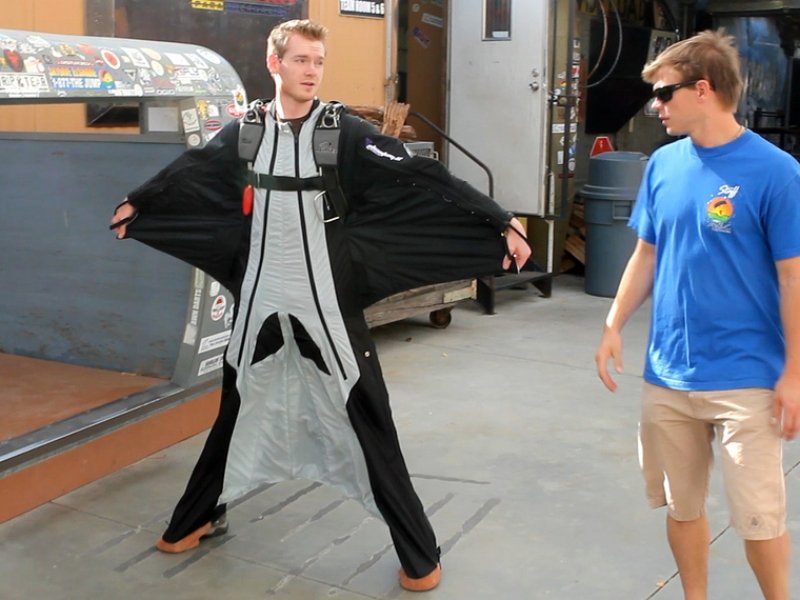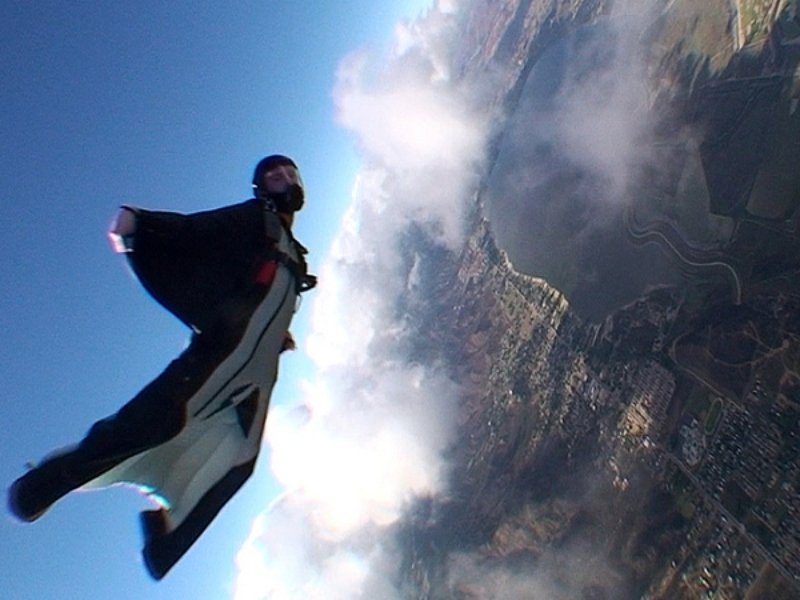If you have ever watched footage of a wingsuiter swooping through a mountain valley or soaring through the skies like Superman, I’m sure you must be longing to try it. Many new and curious skydivers ask us about wingsuit flying and ‘how does it work?’. We’d love to explain more to you.
Since the Greek fables of Icarus, man has longed to fly high in the skies and soar between the clouds. And while we may now have engine-propelled flights in many shapes and sizes, nothing gets closer to actual human flight than wingsuit flying. Yes, it’s a very dangerous sport, but it’s also one growing in safety and popularity. Today, anyone with the right passion, commitment, and determination can progress to taking their first wingsuit flight.
Let’s look at how you can get started with wingsuit flying and how the aerodynamics of the sport work. We can also look at how wingsuits work and how the sport began.
How do you get started wingsuit flying?

The journey to becoming a wingsuiter starts with skydiving. To learn how to wingsuit fly, you first need to be a highly competent skydiver. That means starting with a beginner’s skydiving course and learning how to freefall and use a parachute. Becoming a licensed skydiver can be challenging but very rewarding. Once you complete 25 jumps and pass the exams, you achieve your skydiving A license, certified by the USPA. You are then a qualified solo skydiver.
Having a skydiving A license and 25 skydives doesn’t make you ready to strap into a wingsuit just yet. You’ll want to continue skydiving regularly and work your way through your B and C licenses. You can start preparing for a wingsuit course once you have achieved these and passed 200 solo jumps. You also need to master jumping at lower altitudes and close to objects. The next step is to take a base jumping course and complete your first 50 base jumps, which will help you see the big difference between base jumping and skydiving.
By now, you should have heaps of knowledge and experience with freefall and low altitude jumping. Base jumping is 43 times more dangerous than skydiving, and wingsuiting is still more dangerous; you must put yourself in safe hands and look for a mentor with lots of experience and an excellent safety record. You will need all your skydiving and base jumping knowledge to become a wingsuiter; when things go wrong, you will often have to assess and react in a split second.
The key to becoming a good and safe wingsuiter is all about risk assessment and knowing your limits. By the time you are strapping into your first wingsuit, you’ve already spent a lot of time, energy, and money; continue to take things slowly and always be watching, listening, and learning.
How do the Wingsuit aerodynamics work?

To understand the aerodynamics of how wingsuiting works, we have to understand the air around us. Air is easy to ignore, but it’s always acting on us. As we travel, be it walking, running, driving a car, or falling at 120 MPH, the air acts on us. When we pass an object through the air, its weight, mass, and surface area affect how the air moves around it and what forces it acts on the object.
When a plane takes flight, there are four major forces at play. The weight of the aircraft and gravity create a downward force, the engine’s thrust creates a forward force, and the air the plane is passing into acts on the mass of the aircraft, causing a drag force. The fourth force in play is lift. This force is all about the plane’s design and how the plane hits the air and transforms the drag force into the lift. It does this by making the force of the air hit the plane’s underside more violently than the top.
All four forces must be in play to create a plane’s flight. Without the forward thrust of the engines, the angled design of the wings can’t transfer the drag of the air hitting the aircraft into the lift. Wingsuiting uses these principles but faces some clear issues. The aerodynamics of the wingsuit isn’t going to be perfect in the same way a plane’s design will be, so a pilot needs to use a lot of skill to maximize the transferring of energy from drag to lift. A wingsuiter also doesn’t have an engine, so the forward force must be created by first falling and building downward force, then angling the body to transfer it into forward force. And this all relies on the design of the wingsuit.
How does a wingsuit work?

While there are many different wingsuits available, they all tend to follow the same basic design principles. Wingsuits are made of rugged, durable fabrics which use the human body as a rigid structure. The material creates webbing between the arms and body and also between the legs. This webbing essentially creates wings that can be moved and manipulated by the pilot. The design of the suits causes the wings to inflate with air and create an upward force.
When a wingsuiter jumps from a plane or base, they immediately enter freefall. Then by spreading out their arms and legs, the wings are created. By straightening their spine, arms, and legs, they gain control over their flight. While the wingsuit establishes the lift force, the actual lift cannot be created or held for long. The force of gravity and the weight of the wingsuiter creates more downward force than the suit creates lift. However, the more lift and control a wingsuiter can make, the more glide they can achieve and the more distance they can fly.
Wingsuits cannot create enough reverse force to slow down or enough controlled descent to land safely. To end a wingsuit flight, the wingsuit pilot must reposition and deploy their parachute. Deploying the parachute is often done at low altitude and requires a lot of skill and special parachute equipment, often with no pilot chute.
How did wingsuit flying start?

The first successful flight was by the Wright brothers in 1903, and it was only nine years later that parachute jumping from a plane was attempted, in 1912. It was even further back, in 1797, when the first successful parachute jump took place, but with the invention of aircraft, it literally took parachute jumping to new heights.
As technology and understanding improved, people started jumping from higher heights and deploying their parachutes at lower altitudes, experiencing more freefall. In the 1930s, early ideas for birdman suits were trialed and tested. Using materials such as wood and steel, few offered any signs of success. In fact, between 1930 and 1961, 72 skydivers died attempting flights using various designs of birdman suits. The fatality rate was so high that the USPA banned the use of winged suits in skydiving.
In the 1980s, German skydivers began developing a wingsuit that added simple fabric webbing between the arms and body, starting to resemble today’s wingsuits. While it didn’t create the same lift a modern wingsuit can, it significantly decreased the descent of a skydiver and offered some control and stability. Such was its success that in 1987 the USPA removed the ban on winged skydiving suits.
French skydiver Patrick De Gayardon is credited with inventing the modern-day wingsuit in the mid-1990s, with his design to add additional webbing between the legs. Sadly he passed away during a wingsuiting accident during testing, but his wingsuit concept developed further, and the first commercial wingsuits went on sale in 1998.


2 Comments
1979?
Thank you for your comment, John. You are right, the first jump was not in 1979, we already fixed it.